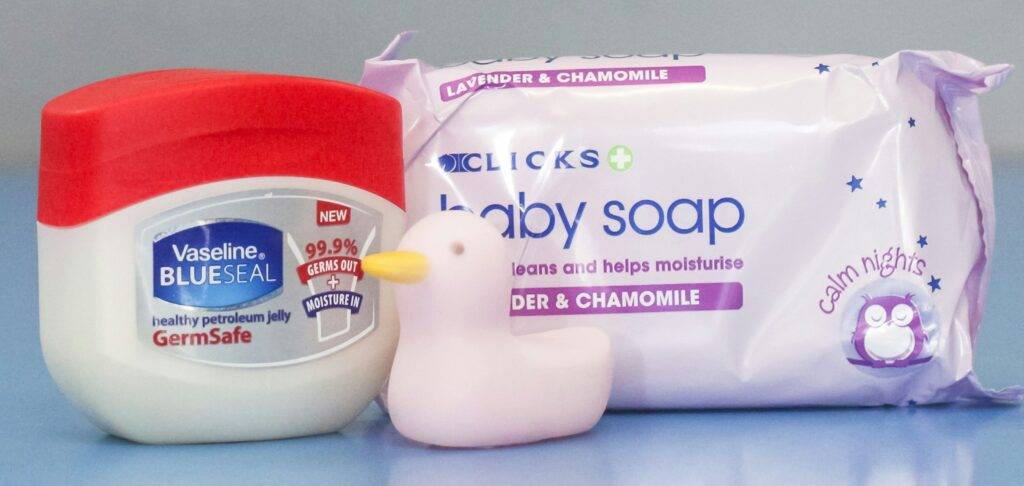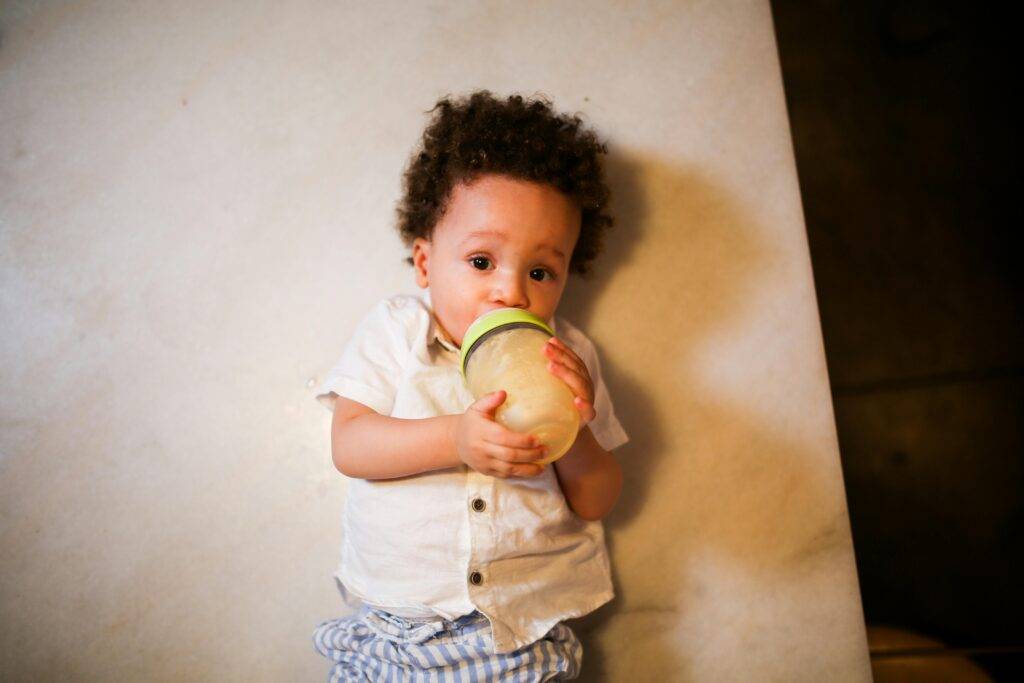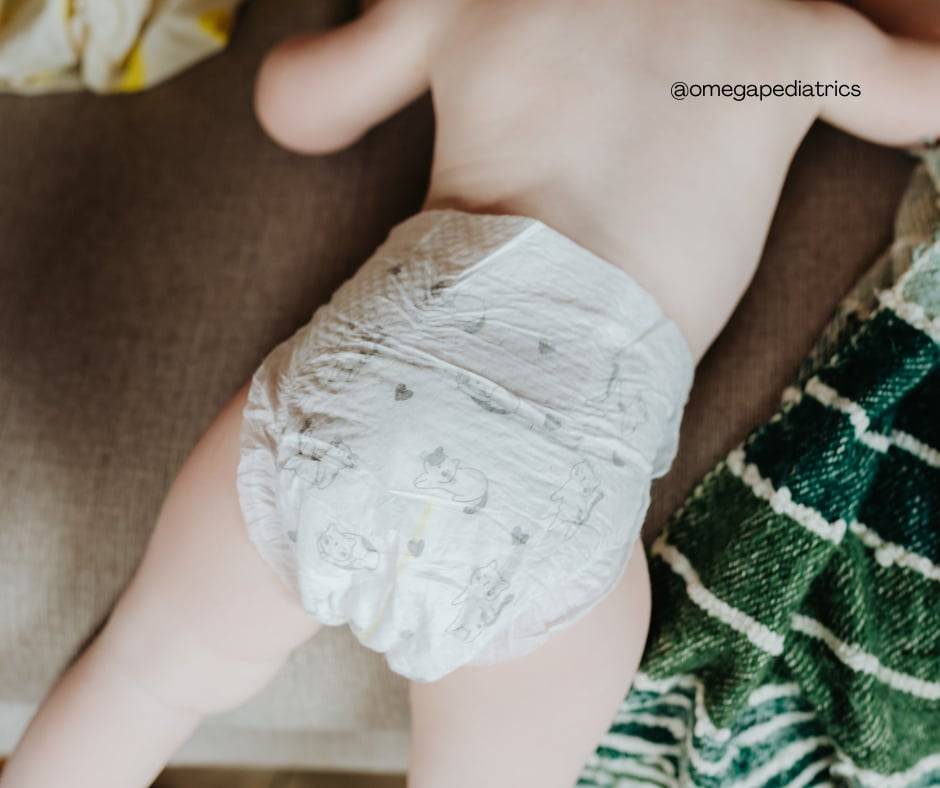I’m sure you’re excited to buy your newborn baby essentials. With all the fun things you can buy, like cute baby outfits and toys, shopping for your baby’s items will surely be no boring day. But, there’s one thing that’s actually concerning— budget.
Having a baby could be expensive, especially when it’s your firstborn. That’s why here at Omega Pediatrics, we’re providing you with a new mom’s guide to budgeting so that you’ll know how to save money on baby essentials.

Newborn and Baby Must-Haves
Having children is priceless, but it also comes with a price! For a new mom, you might get overwhelmed with the expenses for your firstborn. To ease out, let’s look at the expenses we should consider to plan our budget properly.
We at Omega Pediatrics will guide you on how to save money on baby essentials so that your baby can thrive and grow without feeling the financial burden.
Baby Furniture
Before you even have a baby, ask yourself simple questions like ‘Where will my baby stay when I give birth?’ or ‘Where will my baby sleep?’
The answer is —a nursery. Your little one’s nursery could be as simple as a crib or a fully-furnished room dedicated to your one and only!
We really want the best for our bundle of joy, so you may think of all the cute baby furniture. You could let your imagination soar and put in a rocking chair, a beautiful rug, and even some pretty cool wall art!

However, note that all those you would love to have aren’t the basics. If you’re on a tight budget, focus on the furniture essentials first. These are the mattress, crib, nursing pillow, and baby bedding.
Feeding and Nursing Supplies
The next most important thing you’ll have to consider when budgeting for your baby is how your baby will be fed
Newborns generally require breastfeeding than milk formula. Breastfeeding saves you money from store-bought milk and is also healthier for your little one, a win-win situation, right? It also protects your baby against illnesses such as diarrhea, asthma, and pneumonia.
If you wish to store the milk from breastfeeding, invest in a breastfeeding pump for you and your baby’s convenience!
However, if you’re one of those moms who can’t breastfeed, you can estimate your feeding expenses. Here’s a guide on milk consumption based on the baby’s age:
- Newborn baby: 45-90 ml (1.5 to 3 oz) every 2-3 hours
- 2 months old: 120-150 ml (4 to 5 oz) every 3-4 hours
- 4 months old: 120-180 ml (4 to 6 oz) every 3-4 hours
- 6 months old: 180-230 ml (6 to 8 oz) every 4 to 5 hours
How to Borrow or Obtain a Breast Pump for Free
If you’re looking to borrow or get a breast pump for free, there are several avenues you can explore:
1. Ask Friends and Family
Reach out to friends or family who have had babies recently. They might have a closed-system breast pump they no longer need and would be willing to lend you. Closed-system pumps are designed to be safe for multiple users, as long as you replace the plastic attachments, such as tubing and flanges. These components can be purchased separately for around $45.
2. Insurance Coverage
Check with your health insurance provider. Many insurance plans cover the cost of a new breast pump, often allowing you to get one for free. Contact your insurance company to understand their policy and the steps you need to take to receive your breast pump.
3. Local Community Groups
Join local parenting groups on social media platforms. These communities often have resources for new parents, including the sharing or donation of baby gear. Someone in the group might have a breast pump they can lend or give away.
4. Breastfeeding Coalitions and Nonprofits
Various breastfeeding coalitions and nonprofits offer programs to provide free breast pumps to qualifying families. Look for organizations in your area dedicated to supporting new mothers, as they often have resources available.
5. Hospital Loan Programs
Some hospitals have loan programs that allow new mothers to borrow breast pumps for free or at a low cost. Speak with your healthcare provider or a lactation consultant at the hospital where you plan to deliver; they can guide you on how to access these programs.
By exploring these options, you increase your chances of obtaining a breast pump without the financial burden, making your breastfeeding journey a bit easier.
Essential Breastfeeding Clothing Items and Money-Saving Tips
When it comes to breastfeeding, a few key clothing items can make the experience more comfortable and convenient. Start with a set of nursing bras, as these provide the necessary support and easy access for feeding. They are often the only specialized purchase you may need.
Multifunctional Wardrobe Picks
You can often utilize your existing wardrobe for breastfeeding by choosing adaptable pieces:
- Flowing, loose-fitting tops: These provide easy access and comfort.
- Button-down shirts: Perfect for quick and discreet breastfeeding anywhere.
- Large scarves or thin baby blankets: These can act as nursing covers, offering both privacy and versatility.
Budget-Friendly Tips
- Hand-Me-Downs: Ask friends or family members who have recently stopped breastfeeding. Many will be happy to pass on their gently used nursing gear.
- Thrift Stores and Online Marketplaces: Look for second-hand maternity and nursing clothes at thrift shops or on websites like eBay or Facebook Marketplace.
- Maternity Wear Double-Duty: Invest in maternity clothes that can also function as breastfeeding wear. Many maternity tops and dresses come with features like side slits or wrap designs that are perfect for nursing.
By tapping into these strategies, you can assemble a practical and cost-effective breastfeeding wardrobe without breaking the bank.
Diapers
Your baby needs a lot of diapers every day. Most especially when you choose disposable diapers for baby number one. So, calculate how much you’ll spend every month before looking into other baby items.
To save on diaper expenses, consider cloth diapers which are definitely cheaper. These are washable for repeated use. However, you’ll need to spend for oils, creams, powders, and wipes so your baby will be comfortable in cloth diapers.
Baby Clothing
Here’s one of the most enjoyable parts of baby shopping —buying baby clothes! We know that buying baby clothing is very exciting because of the variety of cute baby clothes. To avoid this, budget how much you can spend on these clothes.
Also, keep in mind that babies grow fast. It’s best not to overspend on clothes since your baby will easily outgrow them.
Where to Find Affordable Special Occasion Clothes for Your Baby
When it comes to dressing your baby for special occasions, you don’t need to break the bank. Here are some great options for finding affordable, stylish outfits:
- Consignment Shops: These stores offer gently used clothes at a fraction of the retail cost. From adorable dresses to tiny suits, you’ll find a variety of options for special events. Plus, many outfits are practically new, having been worn only once or twice.
- Thrift Stores: Another excellent place to search for deals. You can often find high-quality clothes that still look brand new. It’s a treasure hunt that can yield fantastic finds without the high price tag.
- Online Marketplaces: Websites like eBay, Poshmark, and Facebook Marketplace are goldmines for secondhand clothing. You can filter searches by size and condition, making it easier to find that perfect outfit for your baby.
- Local Community Groups: Check out local parenting groups on social media. Members often sell or even give away barely-used baby clothes, especially items meant for special occasions.
By exploring these options, you can dress your baby in beautiful, affordable outfits for any special occasion.
Childcare Services
Are you a busy mom? If you are, consider adding childcare expenses to your baby’s budget plan. If you have no one to watch over your baby, you may have to bring your child to daycare or hire a nanny. Opting for daycare is much cheaper than hiring a nanny.
To save on childcare expenses, consider letting a family member or a trusted friend watch over your baby. This option saves you money and gives your friend or a family member an interesting bond that your baby will forever cherish.
Another option is for one of your parents to stay home to care for the baby. But of course, also consider the financial impact on your household budget. You can also take parental leave if it’s applicable in your state.
Healthcare Services
Sometimes, we adults don’t even go to the doctor for years! But that’s not how it works for babies and children. Health should be our top priority for our little ones. So, never ever miss an appointment with your pediatrician to ensure your little one is healthy!
According to the American Academy of Pediatrics (AAP), your cute little one should see a pedia on the following well-baby checkup schedule.
- first week of birth
- 1-month-old
- 2 months old
- 3 months old
- 6 months old
- 9 months old
- 1-year-old
- 1 year and 3 months old
- 1 and ½ years old
- 2 years old
- 2 and ½ years old
Hence, you’ll want to estimate how much these baby check-ups be. On top of these, you’ll also budget for your baby’s sick calls outside the pediatric appointment window.
Health insurance can cover some of the childcare expenses in the future. You’ll be able to save more in the long run with health insurance.
How to Save Money at the Hospital When Having a Baby
Welcoming a new baby is a joyous occasion, but it can also come with hefty medical bills. Here are practical tips to help you cut down on hospital expenses without compromising on care.
1. Decline Extra Services
Before going into labor, discuss hospital fees with your chosen facility. Opting out of unnecessary add-ons can save a lot. For instance, a private delivery room might be a luxury, but it’s often accompanied by a hefty daily fee. Consider shared rooms, especially if your stay will be lengthy due to procedures like a C-section. This simple switch can save you hundreds, if not thousands.
2. Request Freebies and Coupons
Manufacturers often provide hospitals with complimentary items for new moms, but busy staff might not always distribute them. Don’t hesitate to ask your nurse for any available samples. You might receive lotions, diaper ointments, baby wash, or even coupons for future purchases—all of which can significantly reduce your baby care costs in the initial months.
3. Utilize Hospital Supplies
You’ll likely find a treasure trove of baby-care items right in your hospital room, stored under the bassinet. These can include diapers, swaddling blankets, alcohol swabs, nasal aspirators, and more. Asking if you can take these supplies home is a smart move—they’re already included in your hospital bill, after all. Stocking up on these essentials at the hospital means fewer trips to the drugstore later.
By following these straightforward strategies, you can alleviate the financial stress and focus on what truly matters: welcoming your new addition to the family.
If your baby doesn’t have a pediatrician yet, you may consider Omega Pediatrics. We at Omega Pediatrics treat our patients like family, and your baby is assuredly cared for in good hands!
How to Take Advantage of Health Care Freebies for Your Baby
Every new parent knows that baby expenses can add up quickly. However, there are ways to ease the financial burden by taking advantage of healthcare freebies. Here’s how you can start:
- Ask for Samples and Coupons: During checkups, don’t hesitate to ask your baby’s pediatrician for free samples or coupons. Many doctors’ offices receive a variety of product samples from formulas to skincare items specifically for babies.
- Inquire About Free Programs: Some pediatric practices may participate in programs that provide free essentials to new parents. Always ask if there are any such programs available.
2. Sign Up for Newsletters and Reward Programs
- Brand Websites: Many baby product companies offer newsletters that include coupons, free samples, and special promotions. Sign up on their websites to stay informed.
- Loyalty Programs: Some brands have loyalty programs where you can earn points on purchases that can be redeemed for free products or discounts.
3. Visit Health Fairs and Expos
- Local Events: Attend local health fairs, baby expos, or community events, which often have numerous vendors handing out free samples and educational materials.
- Hospital Programs: Many hospitals host informational sessions or baby care classes that come with free kits containing useful baby products.
4. Explore Online Freebie Forums
- Parent Forums and Social Media Groups: Engage with online communities where parents share information about where to find the latest free samples and discounts.
- Freebie Websites: There are websites dedicated to listing current free sample offers. Keep an eye on these for any baby-related giveaways.
5. Utilize Government and Non-Profit Resources
- WIC and SNAP: If you qualify, programs like Women, Infants, and Children (WIC) and the Supplemental Nutrition Assistance Program (SNAP) often provide free or discounted baby products.
- Charity Organizations: Look into local charities or non-profits dedicated to supporting families with young children. They often have programs that offer free essentials like diapers or food.
Being proactive and staying informed can significantly help in managing baby-related costs. By utilizing these strategies, you can score valuable freebies that ensure your little one gets the best care without breaking the bank.

Guide to Budgeting: 9 Money-Saving Strategies for New Moms When Shopping for Baby Essentials
Now that you have a rough estimate of how much money you’ll need to allocate for your newborn, lessen it through money-saving strategies so it’ll be less stressful in our pockets.
1. Don’t Buy All Stuff At Once.
Start buying the essentials first. Then, upgrade as necessary. Know what your baby needs during the first few months. For example, you don’t need to buy a crib. A cradle or bassinet for the first month will do.
We, parents, can be indecisive. What we like now may not be the same thing for our little one in the next months. Also, you’ll never know what the baby wants. So, buying only what the baby will use in the near months is best. Other baby things can wait.
2. Buy Diapers In Bulk.
Since diapers are the fastest consumable among baby’s needs, buying in bulk is a wise move. It’s cost-saving since you can avail of the wholesale price. Also, it saves you precious time going back and forth from the supermarket!
But, consider that your baby is growing fast. Always double-check the diaper size. Don’t buy too many small-sized that might just end up not fitting your baby.
3. Breastfeeding Is Your Best Friend.
The benefits of breastfeeding can never be understated. It’s economically wise since it gives you huge savings compared to formula milk. Since infant feeding takes a big chunk of the budget, breastfeeding is highly encouraged.
4. Borrow Baby Furniture.
Borrowing lets you save money. I’m sure you have many mom friends and also those within your family who have had babies and have outgrown them. Ask for old furniture that your baby could use.
Who knows, the baby carrier they have used before might be stored in their attic. If hygiene is your concern, don’t worry. Most baby furniture, like cribs and dressers, can be shared.
5. Go Thrifting For Second-Hand Baby Items.
Second-hand baby products are the way to go. You can get good deals on baby products that are high-quality and almost brand new from thrift shops. You can also get second-hand baby products online.
If your baby needs special occasion outfits like a Halloween costume or a Christmas outfit, it’s better to thrift it since your baby might only wear it once.
6. Go For Hand-Me-Down Stuff.
Consider to reach out to family and friends whom you know have had babies before. They can definitely help you to pass on their outgrown baby stuff, especially the newborn wardrobe such as mitts, footies, hoodies, rompers, and onesies.
Rattles and similar toys can also be outgrown which you can make use of. While this option may not be appealing to all new moms depending on preference. From a money-saving view, we encourage this since your baby will only use the items for a short time.
7. Don’t Buy Baby Shoes Just Yet.
Sometimes, we’d pass through the department stores and see tiny, cute sneakers for babies. While these shoes look adorable, don’t buy your newborn shoes yet.
Newborns and young babies don’t need shoes until they learn to walk. If you’re wondering what your infant needs to keep their feet warm, newborns use socks or footies.
8. Buy Generic Brands.
Technically speaking, branded items are just the same as generic items. Also, your baby won’t be able to tell the difference!
If breastfeeding is not an option, consider buying generic-brand formula milk. The Food and Drug Administration (FDA) regulates formula milk for babies, so you don’t need to worry about the safety of the generic product.
Different milk formulas have their specific components as well. So, it’s best to consult a pediatrician like Omega Pediatrics to know which formula best suits your baby.
Moreover, although branding matters in marketing, you don’t need to buy branded clothes for your baby if you’re tight on budget. Brands command high price tags, and your baby can’t maximize these to use for a long time.
9. You Can Make Your Baby Food.
Release the inner chef in you! Baby food doesn’t always have to be store-bought. You can buy a food processor and blender to make baby food conveniently! Get your choice of fruits and vegetables, and let those kitchen gadgets do their thing.
The benefit of making your baby food is that it’s fully customizable. You can choose the ingredient plus it’s a healthier alternative. You can always look for baby food recipes online if you are running out of ideas for your baby’s meals.

Where Can You Get Coupons for Baby Food and Formula?
Finding ways to save on baby food and formula can significantly ease the strain on your budget. Here are some effective strategies to get started:
1. Sign Up for Newsletters
Many baby food companies offer newsletters that include exclusive discounts and coupon codes. By subscribing, you can receive regular updates right in your inbox. Simply visit the websites of your go-to brands and look for a sign-up option.
2. Join Store Baby Clubs
Many supermarkets have baby clubs, which provide discounts on baby-related purchases. For instance, some stores offer deals such as $10 off your next purchase when you spend $100 on eligible items like diapers, wipes, and baby food.
3. Online Coupon Sites
Websites dedicated to couponing often feature sections specifically for baby products. Search these sites regularly to find printable coupons or online codes that can be used both in-store and online.
4. Manufacturer Websites
Don’t forget to check out the websites of your favorite baby food and formula brands. They often have special offers and downloadable coupons directly on their site.
5. Social Media Promotions
Follow baby food brands on social media platforms. Companies frequently run special promotions and giveaways where you can get coupons and even free samples.
By using these resources, you can save significantly on baby food and formula, making it easier to provide your little one with nutritious options without breaking the bank.
Why Is It Important to Do Research Before Purchasing Baby Gear?
Taking the time to thoroughly research baby gear before making a purchase is crucial. Here’s why:
Avoid Wasting Money
Poorly chosen baby gear can be a significant financial drain. Imagine spending hundreds of dollars on a high-end stroller only to find it unwieldy or ill-suited to your needs. Without sufficient research, you might end up buying expensive items that don’t live up to your expectations or requirements.
Personal Experience Matters
While reviews and expert opinions are valuable, nothing beats hands-on experience. Whenever possible, test-driving items like strollers or car seats can provide insights that online reviews might miss. For instance, how easy is it to steer the stroller? Does the car seat fit well in your vehicle? These practical considerations can only be evaluated through direct interaction.
Gain Insight from Others
Talking to friends or family members who have already navigated the baby gear maze can be enlightening. They can share their firsthand experiences with different brands and models, giving you a realistic perspective on what works and what doesn’t. It’s also important to ask about any regrets or issues they encountered—learning from their mistakes can save you from making similar ones.
Ensure Safety and Comfort
When it comes to baby gear, safety is paramount. Research can uncover crucial information about the safety ratings and recall histories of products. Additionally, customer feedback often highlights comfort issues for both the baby and the parents, ensuring that you select gear that meets the highest standards of safety and usability.
Match Your Lifestyle
Not all baby gear is created equal, and what works for one parent might not work for another. Research helps you understand how different products will fit into your lifestyle. For example, a compact stroller might be perfect for navigating crowded urban environments, while a more robust model could be better suited for suburban settings with uneven terrain.
By doing comprehensive research, you’ll make informed decisions, save money, and ensure the safety and comfort of both you and your baby.
More Value for Your Money When Shopping For Baby Essentials!
Starting a new family could be financially draining, but don’t lose hope! Following a baby budget plan, you can still start a family while on a tight budget.
With proper budgeting, you’ll be able to learn how to save money on baby essentials while still giving the quality and comfortable life your baby deserves. A new mom’s guide to budgeting like this could help ease your baby’s expenses!



